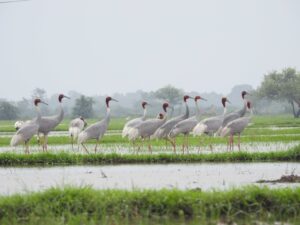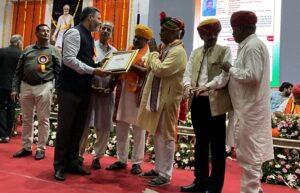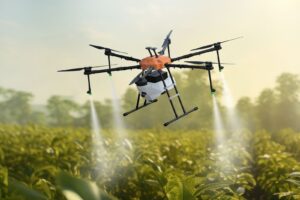Tackling Land Degradation, Desertification, and Drought Resilience in Indian Agriculture

By Ashish Dobhal, CEO of UPL SAS

Extreme weather events are becoming increasingly common. Floods, erratic rainfall, and extreme heatwaves — these consequences of climate change are becoming familiar to all of us. For those not engaged in agriculture, these effects are disruptive and inconvenient. However, for the farming sector, they pose an existential threat, primarily due to land degradation.
According to the United Nations Convention to Combat Desertification (UNCCD) report, as of 2019, India
had 30.51 million hectares of degraded land, which accounts for 9.45% of the country’s total land area.
Additionally, over 120 million hectares, more than a third of India’s land area, were reported as being under drought conditions in 2019. Statistics also reveal that over 18 percent of India’s population was exposed to land degradation, and a staggering 83.85 percent were exposed to drought.
The situation is indeed dire, with increasingly frequent extreme weather events being a major contributing
factor. For example, heavy rains wash away the topsoil. In India, more than half of the farmlands are rainfed rather than irrigated, leaving the topsoil vulnerable to erosion during heavy rains.
Water erosion is responsible for 80 percent of the degradation occurring on unirrigated, rainfed farmland.
Similarly, heatwaves deplete soil moisture, creating drought-like conditions and destroying soil biodiversity. This loss of fertility-boosting organisms and microorganisms further diminishes soil and crop health.
In simple terms, climate change severely impacts farmlands and their productivity.
With food demand soaring and expected to rise further, we cannot afford this toll
Fortunately, there are measures to conserve soil health and reverse land degradation.
What is required is a climate-smart approach that prolongs soil fertility while building resilience to
withstand extreme weather events and droughts. This encompasses crop nutrition and protection,
precision agriculture, crop rotation, and intercropping.
Precision agriculture uses data on weather conditions, soil health, and crop growth to determine the exact
inputs needed.
By accurately gauging the amount of water, nutrients, fertilizers, and pesticides required, farmers can use
resources like water more responsibly and efficiently, reducing the strain on the soil. Combined with
practices like crop rotation and intercropping, this approach preserves soil health and extends its fertility.
Fertile soil has immense potential, which can be harnessed through agroforestry. Agroforestry exemplifies
how farmland and forests can coexist symbiotically. Forest trees enrich the soil and protect crops from
extreme weather.
However, for climate-smart practices to be most effective, a collaborative approach involving farmers, the
government, and the private sector is necessary. While the government should create an enabling policy
environment, the private sector can drive innovative solutions.
Innovation is already in motion. UPL, for instance, has developed a wide range of climate-smart products,
for crop protection and soil health to plant stimulation and post-harvest solutions. One notable success is
the Zeba technology, a patented sustainable superabsorbent product that is biodegradable.
Zeba increases the soil’s water-holding capacity, improves nutrient use efficiency in the crop’s root zone,
and positively affects the soil microbiome, thereby maintaining soil health. Adoption of Zeba can lead to a
15-20% increase in water efficiency compared to traditional irrigation methods, benefiting crops like
sugarcane and groundnuts. Similarly, subsurface irrigation systems have demonstrated their efficacy in
delivering water directly to the root zone, thereby reducing water wastage and maximizing crop yields.
Zeba was used across 1.2 lakh acres of farmland in India in 2023 and saved 72 billion litres of water.
Moreover, the use of Zeba led to a 25% reduction in fertilizer use while delivering savings of Rs. 1,500 per
acre on electricity and Rs. 1,000 per acre on labor. In total, Zeba has helped farmers earn an additional
income of Rs. 22,000+ per hectare on an additional spend of less than Rs. 5,000.
The company is also contributing to reforestation efforts by promoting Social Forestry, where communities
work together to restore barren and deforested lands, driving environmental, social, and rural
development.
In conclusion, addressing land degradation, desertification, and drought resilience in Indian agriculture
requires a multifaceted and collaborative approach. By adopting innovative climate-smart practices and
fostering cooperation between farmers, the government, and the private sector, we can build a sustainable
and resilient agricultural future for India.





